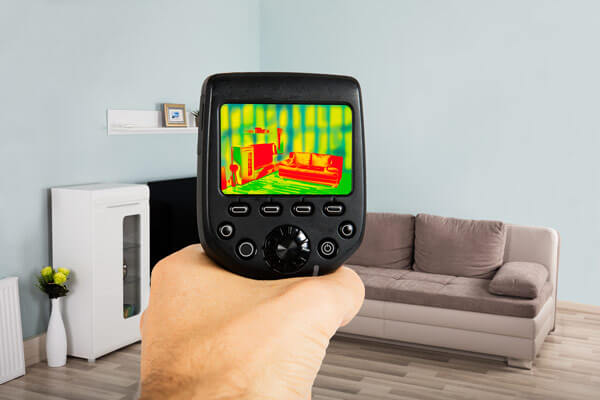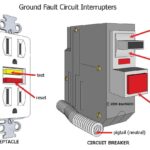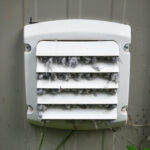GFCI and AFCI Protection
What is a GFCI? Continue Reading

Infrared thermography, also known as thermal imaging, is the science used to capture and process thermal information using non-contact measurement tools.
Thermal imaging cameras work by detecting heat signatures and displaying them as a gradient scale, with lighter colors signifying areas that are more hot and darker colors signifying cooler areas. Unlike a traditional camera that captures visible light, infrared captures the heat signature of an object. This allows infrared cameras to function in ways that traditional visible light cameras cannot.
Using an infrared camera provides certain advantages in locating moisture problems. Thermal patterns created by latent moisture become readily apparent when viewed through an infrared camera, even when they are not visible to the naked eye. This is because the infrared camera sees the apparent temperature difference between wet spots and building materials. Water intrusion and excessive moisture within walls, under floors, and above ceilings will show up in the thermal image. Water intrusion implies that the house has been compromised somewhere, perhaps through the roof, in the basement, or as the result of a mechanical or plumbing leak.
Infrared imaging is especially useful when looking for air leaks, including insulation defects, because it allows the inspector to actually view the apparent temperatures in a given area.
By purposely controlling the temperature and air pressure in the interior of a house, air can be forced inside through cracks and holes. Using an infrared camera, the sources of these air leaks can be quickly located and visually documented. Areas of insufficient insulation also become more apparent when viewed through an infrared camera and can be visually documented, as well.
Thermal technology is a safe, effective and non-invasive way of detecting moisture and air leakage that can lead to mold and higher energy bills. If you suspect your home of having moisture problems, missing insulation or air leakage, a thermal CastleTech inspection and report may help you save money on heating or cooling costs and find hidden water.
Proudly serving Newmarket home inspection, Aurora home inspection, Richmond hill home inspection, Markham home inspection, Vaughan home inspection, Toronto home inspection, North York home inspection, Scarborough home inspection, Pickering home inspection, Oshawa home inspection, Whitby home inspection, Mississauga home inspection, Etobicoke home inspection, Burlington home inspection, Oakville home inspection, Hamilton home inspection, Keswick home inspection, Sharon home inspection, Bradford home inspection, Barrie home inspection, Best home inspection, Best home inspector

What is a GFCI? Continue Reading

Clothes dryers are often neglected by the homeowner. It’s easy to forget about it as long as it’s still doing its job of dryer clothes. Continue Reading